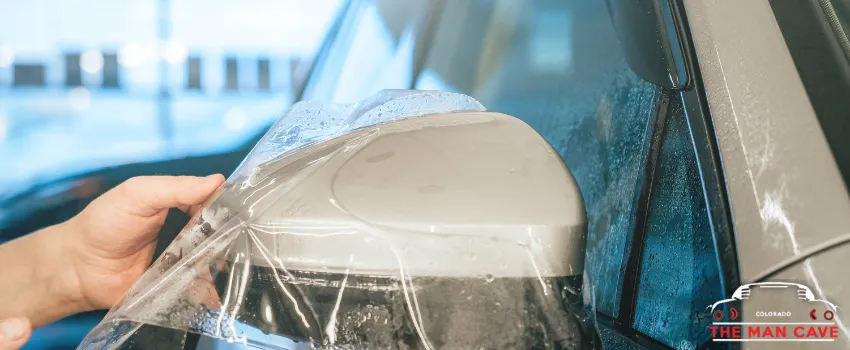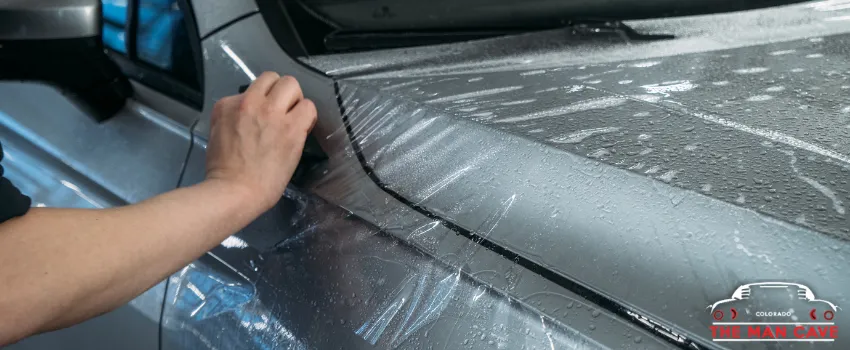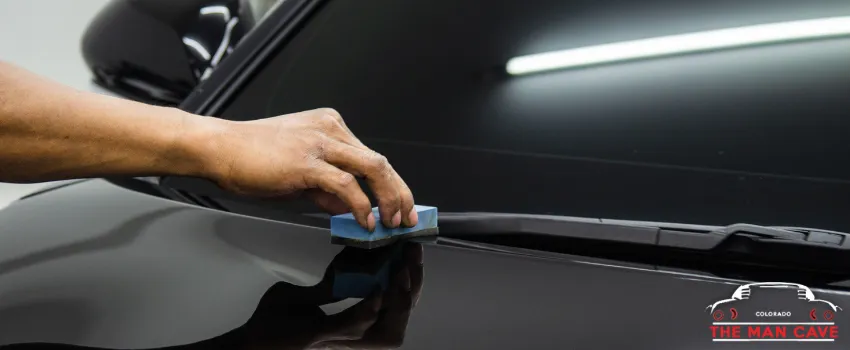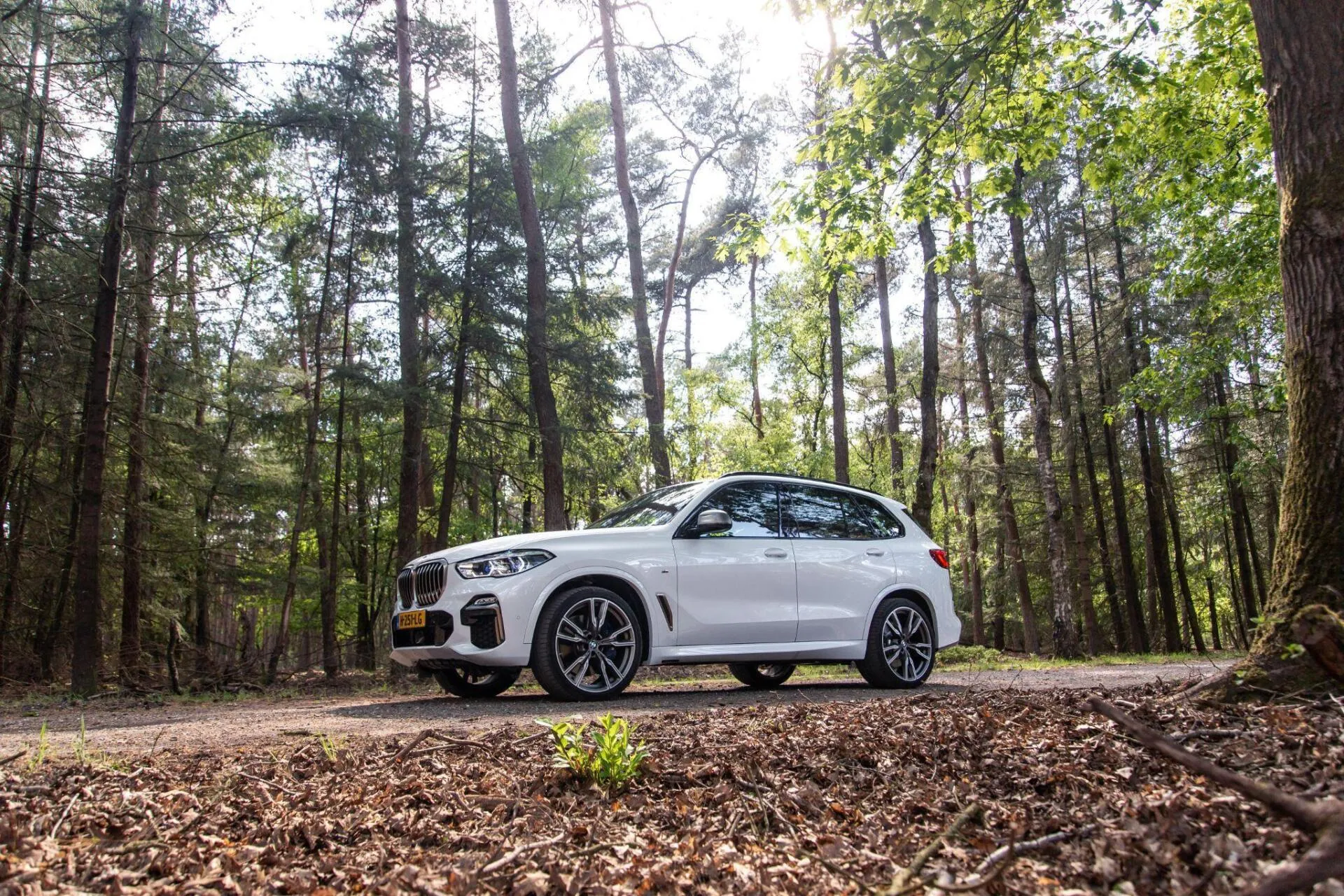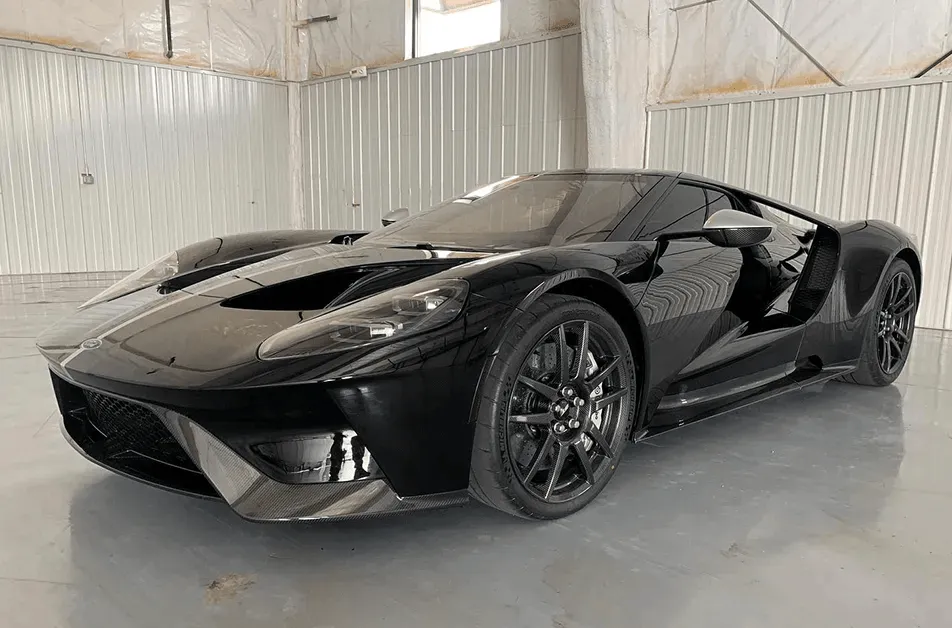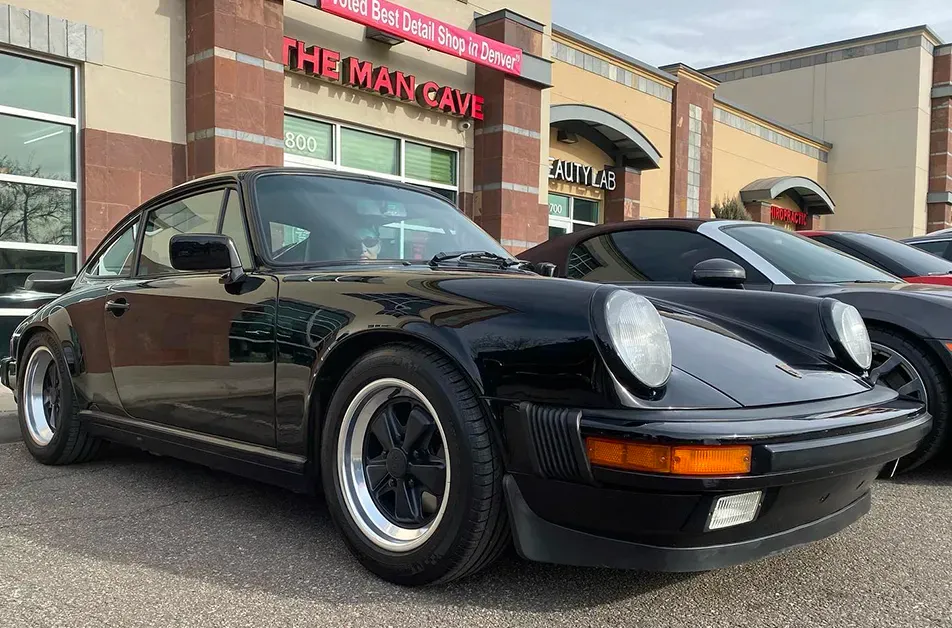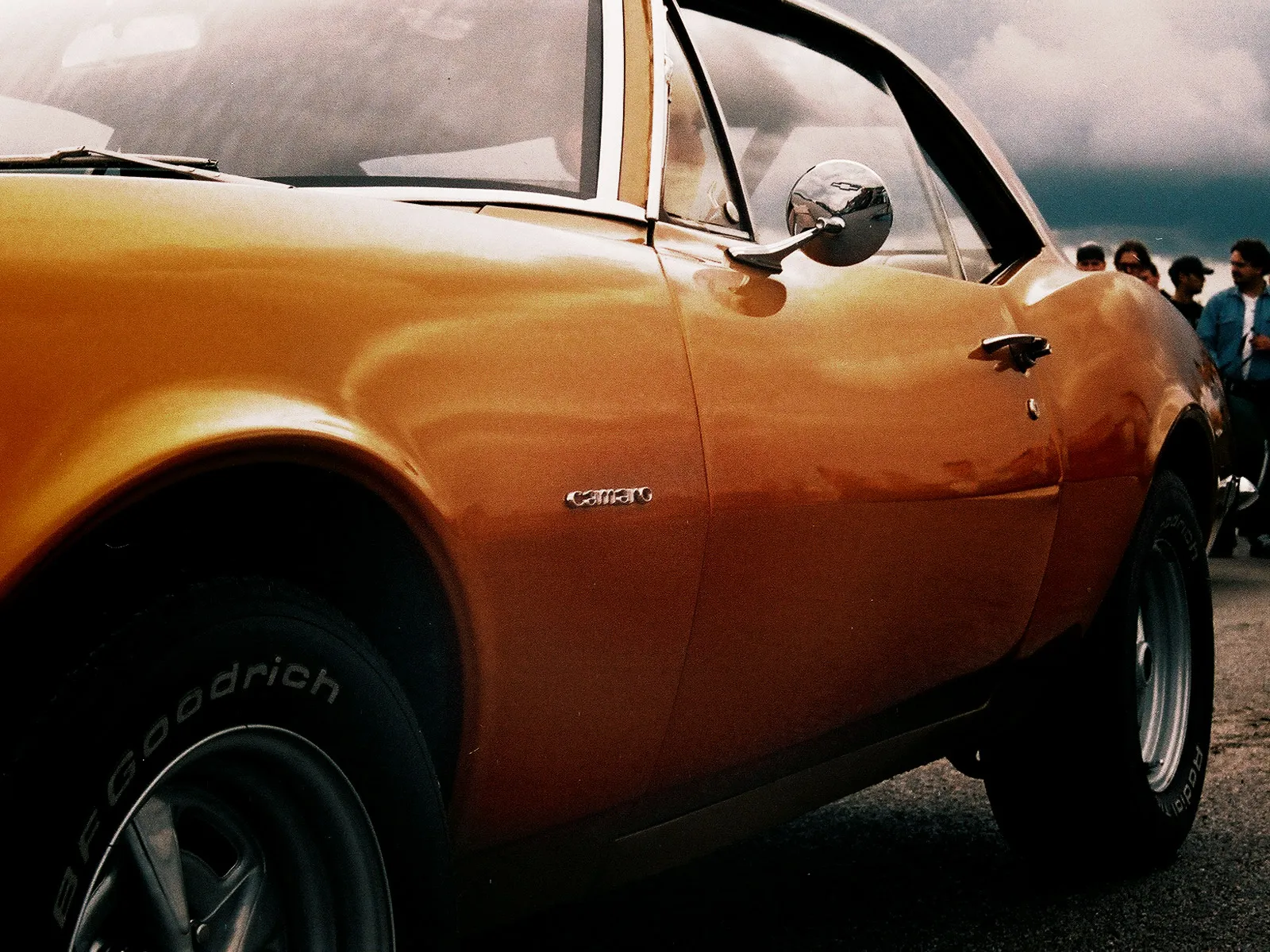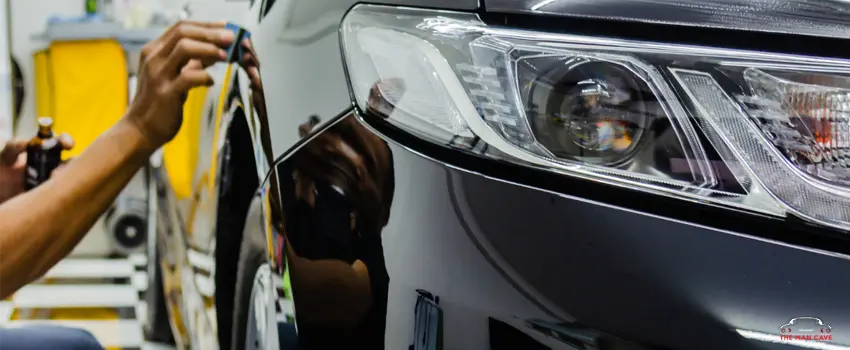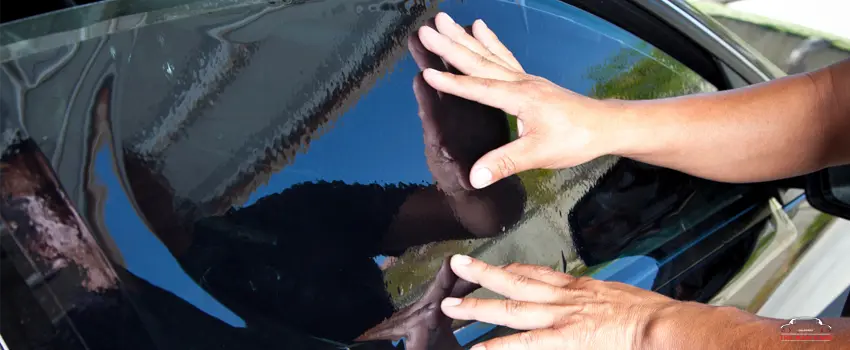Many car enthusiasts are more than willing to dedicate considerable time and financial resources to preserve the immaculate paint finish of their vehicles. This commitment goes beyond mere aesthetics, though; it’s actually a strategic move that can uphold an automobile’s resale value.
Yet, even with regular, diligent efforts to maintain a like-new appearance for your auto, time can still leave it susceptible to dents, scratches, and unsightly stains. A good way to prevent these is by investing in reliable exterior protection solutions like paint protection film and ceramic coating.
What Is Paint Protection Film?
Paint protection film, or PPF for short, is sometimes referred to as clear bra. It is a specialized and transparent polyurethane film that is meticulously applied to a vehicle’s painted surfaces.
Engineered to be highly durable and resistant to potential damages like stone chips and minor abrasions, PPF can effectively absorb the impact of external elements. This capability helps prevent these elements from directly affecting a car’s original paint. It also has self-healing properties that allow minor scratches and swirl marks to disappear over time.
What Is Ceramic Coating?
Ceramic coating, sometimes called ceramic paint coating or nano-ceramic coating, involves using a liquid polymer applied to a vehicle’s exterior surfaces. Formulated using advanced nanotechnology, this coating type chemically bonds with your car’s paint, creating an ultra-thin and transparent protective layer.
Ceramic coatings have remarkable hydrophobic properties, meaning they can effectively repel water and contaminants. This results in water beading and sliding off the vehicle’s surface, reducing the potential for water spots and staining. It also provides a high level of UV resistance, guarding against paint fading or oxidation, although it doesn’t offer the same thickness as paint protection film.
Is Paint Protection Film the Same As Ceramic Coating?
If you take a close look at a paint protection film vs. ceramic coating comparison chart, it should be easy to see that the two methods are distinct when it comes to safeguarding a vehicle’s paint. This is because each one has its own unique characteristics.
PPF involves the application of a physical, transparent film that acts as a shield against various forms of damage, including impacts and abrasions. On the other hand, ceramic coating is a liquid polymer that chemically bonds with the paint, forming a protective layer with hydrophobic and UV-resistant properties.
While both PPF and ceramic coating are popular auto paint protection techniques, they differ in application and the hazards they are designed to guard against. PPF has a more robust barrier against physical impacts, while ceramic coating offers an ultra-thin layer that focuses on enhancing the paint’s overall resilience and gloss.
Similarities Between PPF and Ceramic Coating
Although paint protection film and ceramic coating are different from one another, they do share several similarities. These include the following:
1. PPF and ceramic coating are both auto-protective layers.
Both paint protection film and ceramic coating are applied to a vehicle’s paint surface as protective layers. As such, they offer effective defense against various external and harmful elements.
2. Both enhance car paint gloss and shine.
Paint protection film and ceramic coating both provide protective layers that help enhance the reflective properties of a car’s paint. This results in an intensified gloss and shine that contribute to a visually appealing finish.
3. The two are known to be scratch resistant.
Both PPF and ceramic coating possess inherent scratch-resistant properties. PPF’s physical film acts as a barrier against minor car damage, while ceramic coatings create a hardened surface that reduces the likelihood of surface-level scratches.
4. Both offer protection against environmental hazards.
Regarding environmental dangers like bird droppings, tree sap, and harmful UV rays, paint protection film and ceramic coating act as effective shields. The two can mitigate potential damage caused by environmental or external factors, helping to preserve the integrity of a vehicle’s paint over time.
Differences Between PPF and Ceramic Coating
Below are the differences that you’ll find when making a ceramic coating vs. paint protection film comparison:
1. Material Composition
The primary distinction between paint protection film and ceramic coating lies in the material composition. PPF is a physical layer of transparent polyurethane film, offering a thicker and more substantial barrier against impacts. Ceramic coating, meanwhile, is a liquid and thin polymer that chemically bonds with the car paint.
2. Application Process
PPF requires meticulous cutting and fitting of the film to a vehicle’s contours, often necessitating professional installation. Ceramic coating, on the other hand, involves the application of a liquid solution and allowing it to bond with the paint through chemical reactions. It’s a process that either experts or DIY enthusiasts can complete.
3. Level of Protection
Due to its thick film, PPF excels in protecting your auto against physical impacts, such as rock chips and scratches. Ceramic coating primarily focuses on providing resistance against environmental contaminants, UV rays, and chemical etching so the paint’s overall resilience can be enhanced.
4. Longevity
Paint protection film is generally considered more durable and long-lasting than ceramic coating. PPF can withstand harsher conditions without compromising its protective qualities. Ceramic coatings, while offering significant longevity, may require periodic reapplication to maintain optimal performance.
5 Cost
PPF tends to be more expensive due to the materials used and its intricate installation process. Ceramic coating is usually more cost-effective but might require repeat applications over time to maintain its effectiveness.
Is Ceramic Coating Better Than PPF
To determine if ceramic coating is better than PPF, you need to consider several factors. These include:
1. Budget
Ceramic coatings generally tend to be more budget-friendly than paint protection film, which can involve higher material and installation costs. If budget constraints are a significant consideration, ceramic coating might be a more feasible protective option for your automobile.
2. Desired Protection Level
This can play a vital role when comparing PPF and ceramic coating. If you’re seeking robust protection against physical impacts like rock chips, the thick layer of paint protection film is more suitable. In contrast, if your focus is on enhancing vehicle gloss and combating UV damage, ceramic coating should be your choice.
3. Exposure to Hazards
The nature of dangers your car is often exposed to also matters when comparing ceramic coating to PPF. If you frequently drive on areas with debris-prone roads, the superior physical defense that paint protection film can provide could be more advantageous. For vehicles subjected to constant sun exposure, ceramic coating’s attributes might be more appealing.
4. Long-Term Goals
If you plan to keep your auto for an extended period and want to maintain its appearance and value, PPF’s durability could be the wiser choice. If you’re looking for a more temporary solution or simply want to enhance your car paint’s aesthetics without heavy protection, ceramic coating might be preferable.
Should I Get PPF and Ceramic Coating?
Deciding whether to opt for paint protection film and ceramic coating depends on your individual needs and expectations about how your vehicle should appear before others. Nevertheless, combining the two methods is worth considering since it offers a more comprehensive shield for your auto. In other words, this dual approach could be especially beneficial if you’re seeking a well-rounded defense for your vehicle’s paint.
However, you should consider your budget, as getting both treatments can obviously be more expensive. Lastly, you must assess whether the combined benefits align with your long-term goals for your car’s aesthetics and resale value.
Key Takeaway
Determining your vehicle’s optimal paint protection solution should revolve around your personal preferences and plans. Begin by considering the specific vulnerabilities you wish to safeguard your car against and choose between ceramic coating and paint protection film.
In certain situations, however, the most advantageous course might entail combining the two paint protection methods. Naturally, this decision entails a more substantial budgetary commitment. If you have the financial capacity to invest, settling for PPF and ceramic coating should hardly be an issue. Still, it’s best to consult an established auto repair shop before making a final decision.
Protect your auto more effectively with the help of Man Cave Colorado.
If you’re intrigued by the unique capabilities of paint protection film and ceramic coating, Man Cave Colorado can provide you with the needed clarifications. More importantly, we can help you decide which method will be best for your vehicle.
Our auto detailing services in Colorado include the two popular applications and so much more. We have a team of professional car technicians who can explain all the essential information and provide you with the service you choose. Call us today.

